Search results for: 'Stone'
-
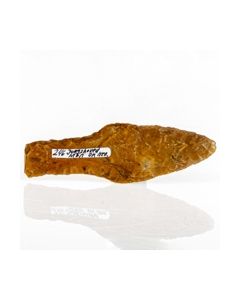 Scandinavian flint dagger
Scandinavian flint daggerNicely worked flint dagger from the transitional period between Late Neolithic and Early Bronze Age. Jungshoved on the Danish Island of Moen was the find spot.
Price: on request Beaker of the Bell Beaker culture
Beaker of the Bell Beaker cultureThe voluminous body has the typical shape of vessels from the Bell Beaker culture. It has been made during the transitioning period between Stone Age and Bronze Age.
Price: on request Neolithic dagger
Neolithic daggerNicely worked flint dagger of type III. Sprove on the Danish Island of Moen was the find spot. 1700 to 1500 BC.
Price: on request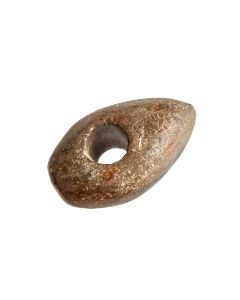 Small battle axe of the Single Grave culture
Small battle axe of the Single Grave cultureThe axe head from the younger Stone Age has a compact shape. Axes that have clearly been used as weapons are rare. Most axe types have probably served peaceful purposes.
Price: on request Vessel of the Linear Pottery culture
Vessel of the Linear Pottery cultureThe beautifully decorated tableware or cookware was made by the earliest peasants of Central Europe, the Late Stone Age Linear Band Ware settlers. A find from Southern Germany in great condition.
Price: on request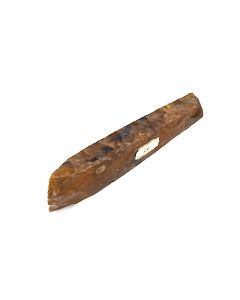 Neolithic axe head from Luetzow in Northern Germany
Neolithic axe head from Luetzow in Northern GermanyNice polished axe from brown flint. It was found more than 100 years ago near the town of Luetzow.
Price: on request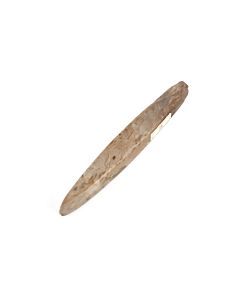 Neolithic chisel from Northern Germany
Neolithic chisel from Northern GermanyElegantly shaped chisel with two polished sides. Made of grey flint. Approx. 3400 to 2400 BC.
Price: on request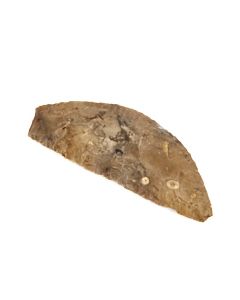 Neolithic sickle from Northern Germany
Neolithic sickle from Northern GermanySmall crescent-shaped blade made of beautiful grey flint. This tool represents an intermediate state within the radical transition from Neolithic to Bronze Age.
Price: on request Neolithic sickle from Northern Germany
Neolithic sickle from Northern GermanyCrescent-shaped blade made of beautiful grey flint. This tool represents an intermediate state within the radical transition from Neolithic to Bronze Age.
Price: on request Neolithic sickle from Northern Germany
Neolithic sickle from Northern GermanySmall crescent-shaped blade made of beautiful polychrome flint. This tool represents an intermediate state within the radical transition from Neolithic to Bronze Age.
Price: on request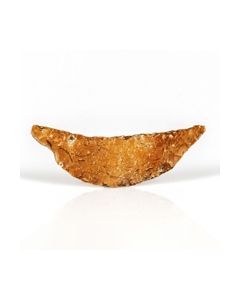 Small Neolithic sickle from Northern Germany
Small Neolithic sickle from Northern GermanyThe crescent-shaped blade is made of reddish brown flint. This tool represents an intermediate state within the radical transition from Neolithic to Bronze Age.
Price: on request Michelsberger culture artefacts from museum stock - found in Camp-a-Cayaux, Belgium
Michelsberger culture artefacts from museum stock - found in Camp-a-Cayaux, BelgiumFunde vom Camp-a-Cayaux, bei neolithischer Flintmine in Spiennes, Belgien. Abschläge und Werkzeuge. 4500 v. Chr. bis 3500 v. Chr.
Price: on request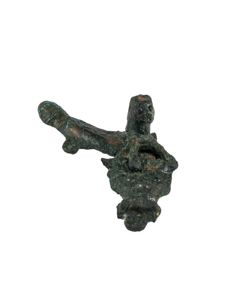 Intricate Roman fascinus amulet from the Rhineland
Intricate Roman fascinus amulet from the RhinelandExceptional are the originally preserved inserted eyes of the lion and bull. Found near the Roman city of Novaesium, today's Neuss in Germany, an early Roman foundation and with this one of the oldest cities in Germany.
Price: on request Roman gaming pieces from the Rhineland
Roman gaming pieces from the Rhineland6 Roman glass gaming pieces and 8 other Roman artefacts. Finds from the Roman city of Novaesium, today's Neuss in Germany.
Price: on request Roman potsherds and mosaic fragment from the Rhineland
Roman potsherds and mosaic fragment from the RhinelandFragments of Roman pottery. Finds from the Roman city of Novaesium, today's Neuss in Germany, an early Roman foundation and with this one of the oldest cities in Germany.
Price: on request

